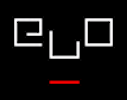Your cart is currently empty!
2007
-
“Seeking” Rob Swigart
Announcing “Seeking,” new fiction by Rob Swigart, innovator, elit author, and former Secretary of the ELO Board. “Seeking” appears as part of the Fictions Present thread in the electronic book… Read more.
-
ELO Welcomes 3 New Board Members
The Electronic Literature Organization is happy to announce the addition of three new board members, Stuart Moulthrop, John Cayley, and Mark Marino. Read more.
-
Extension: CFP: Visionary Landscapes (12/16, 5/29-6/1)
The deadline for Visionary Landscapes: Electronic Literature Organization 2008 Conference has been extended to December 16, 2007. The conference takes place from May 29-June 1, 2008 at Washington State University… Read more.
·
-
Graduate Program in Literary Arts at Brown University
John Cayley reminds interested potential candidates that Brown’s prestigious Graduate Program in Literary Arts – two years (usually all-found) leading to an MFA – is currently accepting one applicant per… Read more.
-
New on the Electronic Book Review: Electropoetics
In the latest selection from the Electronic Book Review, Associate Editor Lori Emerson brings together both critics and creators of electronic poetry, some of whom established themselves at the very… Read more.
-
“Reading Digital Literature” at Brown University, October 4-7
If you are near Brown University this week from October 4-7, consider attending “Reading Digital Literature,” a colloquium organized by Roberto Simanowski. A description and the website follow. A curtain… Read more.
·
-
Brown appoints John Cayley to teach electronic writing
Brown’s Literary Arts Program welcomes John Cayley to the faculty as a senior visiting professor. In this position, Cayley will teach electronic writing, including CaveWriting, for a minimum of five… Read more.
-
Call for Submissions–deadline October 19, 2007
The New River is a journal of digital writing and art, created and edited by Ed Falco. The managing editors are graduate students from Virginia Tech’s MFA Creative Writing Program.… Read more.
·
-
The Aesthetics of Net Literature
In The Aesthetics of Net Literature: Writing, Reading and Playing in Programmable Media editors Peter Gendolla and Jörgen Schäfer have put together a broad table of contents — including contributions… Read more.
-
Grand Text Auto — Exhibition, Symposium, and Performance
October 4th and 5th, at UC Irvine, an exhibition opening, symposium, and performance features the work of ELO Vice-Presidents Noah Wardrip-Fruin and Nick Montfort and ELO Co-Founder Scott Rettberg. EXHIBITION:… Read more.
